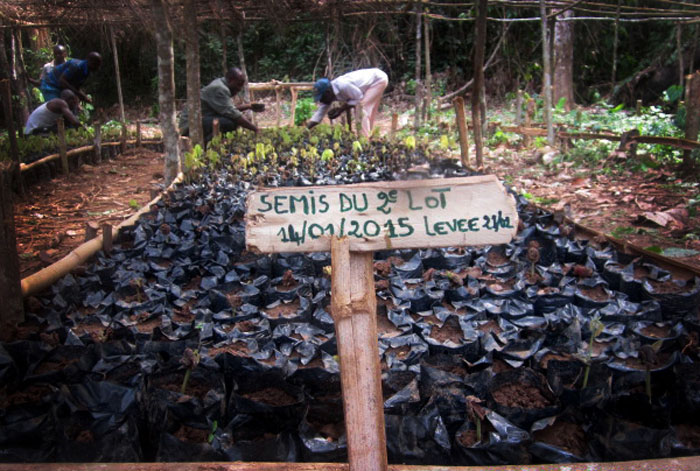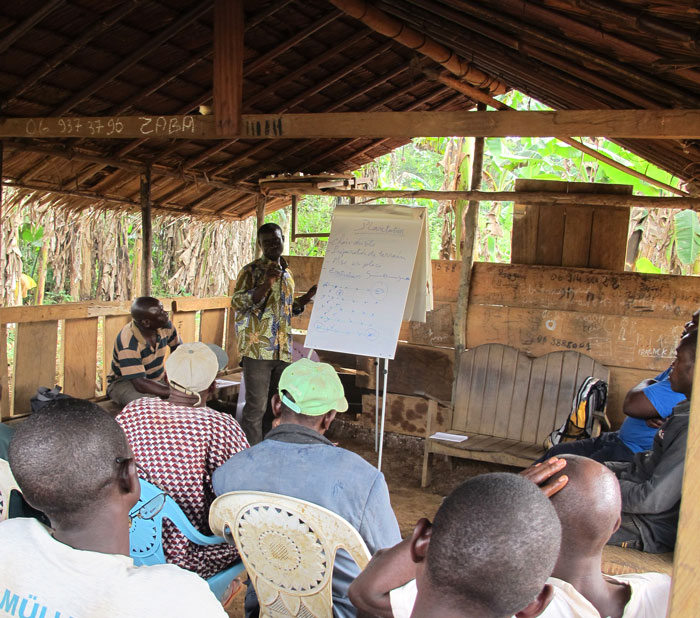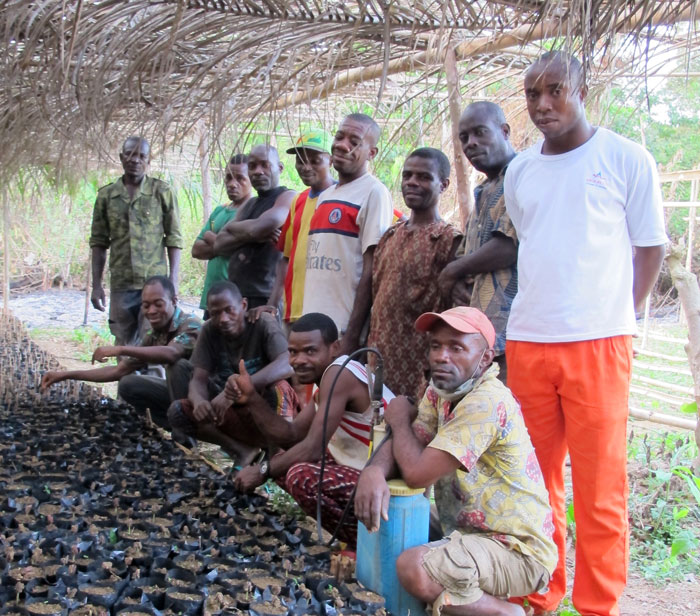The lives of four communities are being transformed by planting 40 000 cacao saplings outside Odzala-Kokoua National Park in the Congo. The programme, involving rehabilitating old cacao fields, is expected to improve harvest yields and the quality of beans to generate income for local villages.

Note: ‘Cacao’ refers to the tree and to the product made from non-roasted seeds, and ‘cocoa’ refers to the product made from roasted seeds.
The programme is being funded by Rapac (Réseau des Aires Protégees d’Afrique Centrale). It is designed to improve the potential of cacao as an alternative income alternative to bushmeat poaching, a significant conservation challenge that threatens the forests of the Congo Basin. Agricultural production needs to increase by 70% by 2050 to ensure global food security and avoid adding additional pressures on natural resources in emerging countries.


70% of the world’s annual cacao production comes from the African continent, and subsistence farmers provide 90 % of this. These smallholders are not organised and do not have access to equipment or financial institutions. In the northern sector of Odzala-Kokoua National Park, this is changing. African Parks is managing a plantation rehabilitation programme at Odzala-Kokoua National Park that will create income-generating activities and divert communities from bushmeat poaching, promoting the development of natural resources for local communities.
Four nurseries have been set up north of the park in the villages of Goa, Biessie, Boutazab and Batekok, the sites of old plantations, almost all dating back to colonial times. The saplings are nurtured and tended to by community members until they are five to ten months old and ready for planting. Once planted, the trees will begin bearing fruit in two to three years.
The climate and soil in the northern area are very suitable for the crop, but a marketing infrastructure is lacking. In addition to improving the marketing, the project will establish cacao nurseries in the community, improve the productivity and quality of cacao produced, increase the area under protection and strengthen existing farmer organisations.
All villagers involved in the initiative have received formal and in-field instruction in growing and harvesting cacao from agricultural experts who were trained in Brazil. Topics covered include rehabilitation and maintenance of plantations and treatments to improve their yields.
The programme is also exploring options for cacao growers to collaborate with Cameroonian cacao farmers to secure higher crop prices.

Historically cacao production flourished in the Congo with frequent training given in the 1970s and 1980s. In the 1970s, the Congolese authorities took over cacao cultivation due to the financial implications and its essential economic function. However, pressure from the World Bank to liberalise the cacao market resulted in decreasing market prices, government withdrawal, and the closing of the project. This meant that the farmers had to take care of their own cacao.
To read more on the history of chocolate in central Africa, read: The chocolate Isles and to learn more about Odzala-Kokoua National Park click here.
To comment on this story: Login (or sign up) to our app here - it's a troll-free safe place 🙂.![]()
HOW TO GET THE MOST OUT OF AFRICA GEOGRAPHIC:
- Travel with us. Travel in Africa is about knowing when and where to go, and with whom. A few weeks too early / late and a few kilometres off course and you could miss the greatest show on Earth. And wouldn’t that be a pity? Browse our ready-made packages or answer a few questions to start planning your dream safari.
- Subscribe to our FREE newsletter / download our FREE app to enjoy the following benefits.
- Plan your safaris in remote parks protected by African Parks via our sister company https://ukuri.travel/ - safari camps for responsible travellers






